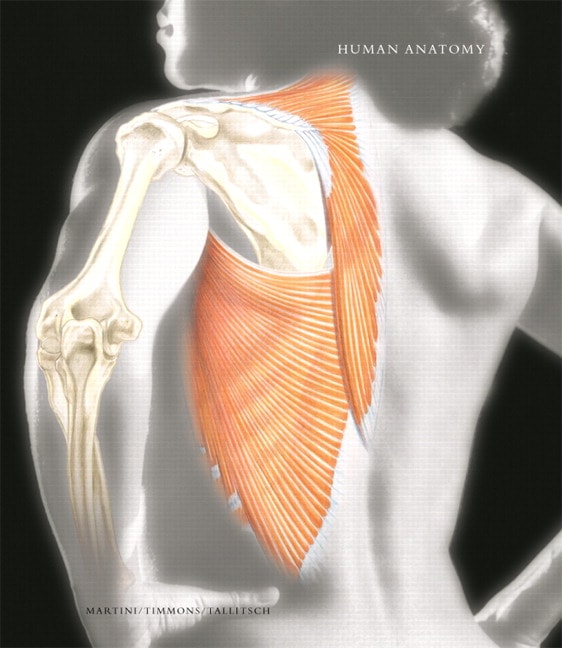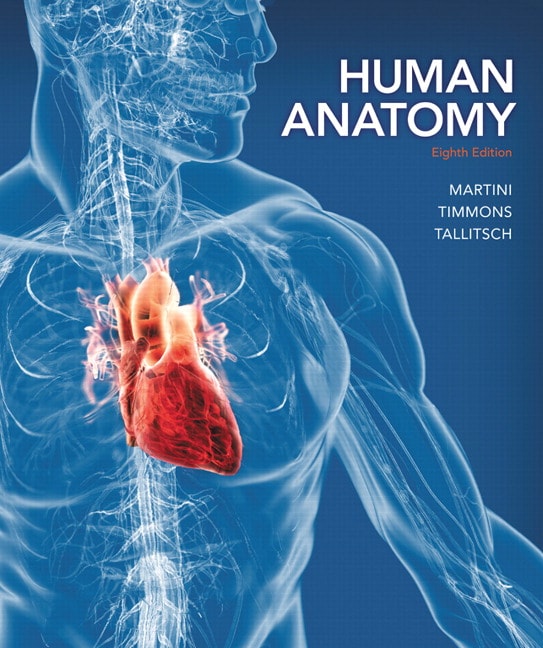Human Anatomy Martini Timmons Tallitsch 7th Edition Pdf
Title: Human Anatomy Martini Timmons Tallitsch 7th Edition Keywords: Get free access to PDF Ebook Human Anatomy Martini Timmons Tallitsch 7th Edition PDF.
Description Celebrated for its atlas-style format, appropriately detailed anatomical illustrations, and exceptionally clear photographs of tissues and cadavers, the Seventh Edition of the award-winning Human Anatomy presents practical applications of anatomy in a highly visual format. Select Clinical Notes feature dynamic layouts that integrate text with visuals for easy reading. Clinical Cases relate clinical stories that integrate text with patient photos and diagnostic images for applied learning. The Seventh Edition is supported by new Practice Anatomy Lab ™ (PAL ™) 3.0 and MasteringA&P ™. Package Components:. Human Anatomy, Seventh Edition. Martini's Atlas of the Human Body.
Practice Anatomy Lab 3.0 DVD. MasteringA&P Student Access Code Card. Award-winning art and photo program:.
“Side-by-Side” Figures provide students with multiple views of the same structure, typically pairing an artist’s drawing with a cadaver photograph taken by renowned biomedical photographer Ralph Hutchings. This approach allows students to compare the illustrator’s careful renderings to a photo of the actual structure as it might be seen in the laboratory or operating room. “Step-by-Step” Figures break down multifaceted processes into step-by-step illustrations that coordinate with the authors’ narrative descriptions. “Macro-to-Micro” Figures help students to bridge the gap between familiar and unfamiliar structures of the body by sequencing anatomical views from whole organs or other structures to their smaller parts.
A typical illustration might combine a simple orientation diagram (indicating where an organ or structure is located in the human body) with a large, vivid illustration of that organ or other structure, a corresponding sectional view, and a photomicrograph. “Illustration-over-Photo” Figures bring depth and dimensionality to the page and ensure that the illustrated structures are visually proportional in size to the human body. Time-saving study tools:.
Concept Check questions appear regularly throughout each chapter and allow students to check their comprehension of a completed section before moving on to the next one. End-of-Chapter 3-Level Learning System helps build student confidence and understanding through a logical progression from factual questions (Level 1) to conceptual problems (Level 2) to analytical exercises (Level 3). The variety of questions also gives instructors flexibility in assigning homework from the text. Concept Links, signaled with blue chain link icons, alert students to related material from previous chapters.
Clinical Notes, located in the running narrative of each chapter, expand upon topics just discussed and present pathologies and their relation to normal function. Clinical Cases, located at the end of each chapter that closes a body system, challenge students to analyze real-life cases. Students are led from a description of a patient’s symptoms through the results of physical exams and lab work. Engaging questions encourage students to review related content in the preceding chapters.

Finally, the cases lead students through brief analysis and interpretation of each case to the final diagnosis of the patient. Embryology Summaries provide students with highly visual presentations of the formation of organs and structures during embryological development.
The MasteringA&P ™ reference at the end of every chapter shows students which MasteringA&P resources can help them review key chapter material on their own. Within the MasteringA&P ox are references to the chapter-specific material, including Practice Anatomy Lab ™ (PAL ™) 3.0. Clinical Notes, located in the running narrative of each chapter, now feature a more visual and dynamic presentation of information.
Manual de brother pr 600. Brother PR-600II Pdf User Manuals. View online or download Brother PR-600II User Manual, Instruction Manual, Brochure. Brother PR-600 Pdf User Manuals. View online or download Brother PR-600 User Manual, Manual. User manual for the device Brother PR-600. Online user manual database.
Select Clinical Notes showcase new dramatic layouts that integrate text, illustrations, and photos in a way that makes reading easy and science relevant. Clinical Cases, located at the end of each chapter that closes a body system, now include patient photos and diagnostic images. Every Clinical Case begins with a photo of the patient and his/her background information, making the case personal and real. Diagnostic images (photos, x-rays, and MRI scans) now enhance the narrative. Over 67 new and visually stunning histology photos and other photomicrographs appear in Chapters 3, 4, 5, 13, 18, 19, 20, and 21. The slides prepared for these photos were stained with hematoxylin and eosin (H&E) to match the types of slides that beginning students will encounter in the anatomy lab.
Spiral CT scans with 3D volume rendering (see Figures 8.16, 22.12) provide students with unparalleled views of anatomical structures and introduce them to a new imaging technique that is increasingly used in clinical settings. Silhouetted treatment of the bone photos in the bone chapters (Chapters 6-7) feature a cleaner and more contemporary look, making bone markings easier to see. The presentation of the Nervous System (Chapters 13-18) has been reorganized to take a “bottom up” rather than “top down” approach to make the nervous system easier for instructors to present and students to understand. Specifically, the discussion of the spinal cord started in Chapter 14 (“The Nervous System: The Spinal Cord and Spinal Nerves”) now continues in Chapter 15 (“The Nervous System: Sensory and Motor Pathways of the Spinal Cord”) so that the sensory and motor pathways of the spinal cord are covered before the brain and cranial nerves in Chapter 16 (“The Nervous System: The Brain and Cranial Nerves”).
“Hot Topics: What’s New in Anatomy” boxes highlight current research. These brief boxes, appearing in Chapters 2-5, 10, 13, 19, 21, and 23-28, introduce students to new peer-reviewed anatomical research findings that have been published within the 2 years prior to the publication of the Seventh Edition. More effective figure organization makes figures easier for students to understand and study. Figure titles are now located consistently at the top of each figure, to introduce it, and figure part captions are now located immediately underneath their respective figure parts for effective text-art integration and easy-reading. Many figures have been reorganized to chunk information into clearer steps in order to guide students through complex processes. PAL ™ 3.0 is an indispensable virtual anatomy study and practice tool that gives students 24/7 access to the most widely used lab specimens, including human cadaver, anatomical models, histology, cat, and fetal pig.
PAL 3.0 retains all of the key advantages 2.0, including ease-of-use, built-in audio pronunciations, rotatable bones, and simulated fill-in-the-blank lab practical exams. PAL 3.0 is available in the Study Area of MasteringA&P and on DVD. The PAL 3.0 DVD is available with every copy of this book for no additional charge. Table of Contents 1. Foundations: An Introduction to Anatomy 2. Foundations: The Cell 3.
Foundations: Tissues and Early Embryology 4. The Integumentary System 5. The Skeletal System: Osseous Tissue and Skeletal Structure 6. The Skeletal System: Axial Division 7. The Skeletal System: Appendicular Division 8. The Skeletal System: Articulations 9.
The Muscular System: Skeletal Muscle Tissue and Muscle Organization 10. The Muscular System: Axial Musculature 11.
The Muscular System: Appendicular Musculature 12. Surface Anatomy and Cross-Sectional Anatomy 13. The Nervous System: Neural Tissue 14. The Nervous System: The Spinal Cord and Spinal Nerves 15. The Nervous System: Sensory and Motor Pathways of the Spinal Cord 16. The Nervous System: The Brain and Cranial Nerves 17.

Human Anatomy Martini Timmons Tallitsch
The Nervous System: Autonomic Nervous System 18. The Nervous System: General and Special Senses 19. The Endocrine System 20.
The Cardiovascular System: Blood 21. The Cardiovascular System: The Heart 22. The Cardiovascular System: Vessels and Circulation 23. The Lymphoid System 24. The Respiratory System 25. The Digestive System 26. The Urinary System 27.
The Reproductive System 28. The Reproductive System: Embryology and Human Development. About the Author(s) Frederic H.
(“Ric”) Martini received his Ph.D. From Cornell University in comparative and functional anatomy for work on the pathophysiology of stress.
He is the lead author of nine undergraduate texts on anatomy and physiology or anatomy. Martini is currently affiliated with the University of Hawaii at Manoa and has a long-standing bond with the Shoals Marine Laboratory, a joint venture between Cornell University and the University of New Hampshire. Martini is now a President Emeritus of the Human Anatomy and Physiology Society (HAPS) after serving as President-Elect, President, and Past-President over 2005-2007. Martini was a member of the HAPS committee that established the course curriculum guides for A&P. Timmons received his degrees from Loyola University, Chicago.
For more than three decades, he has had a strong commitment to teaching nursing and pre-professional students at Moraine Valley Community College (outside Chicago). In 2005-2006, Professor Timmons was honored with the Professor of the Year Award by Moraine Valley Community College and the Excellence award from the National Institute for Staff and Organizational Development for his outstanding contributions to teaching, leadership, and student learning. He has also been the recipient of the Excellence in Teaching Award by the Illinois Community College Board of Trustees. His areas of interest include biomedical photography, crafting illustration programs, and developing instructional technology learning systems. He is a national and regional presenter at the League for Innovation Conferences on Information Technology for Colleges and Universities and at Human Anatomy and Physiology Society (HAPS) meetings. Tallitsch received his Ph.D.
In physiology with an anatomy minor from the university of Wisconsin—Madison. Since then, he has been on the biology faculty at Augustana College in Rock Island, Illinois. His teaching responsibilities include Human Anatomy, Neuroanatomy, Histology, and Kinesiology. In seven out of the last nine years, Dr.

Tallitsch has been designated as one of a select number of “unofficial teachers of the year” by the graduating seniors at Augustana College. Tallitsch serves as a visiting faculty member at the Foreign Languages Faculty at the Beijing University of Chinese Medicine and Pharmacology (Beijing, China) and also at the Foreign Languages Faculty at Central China Normal University (Wuhan, China).